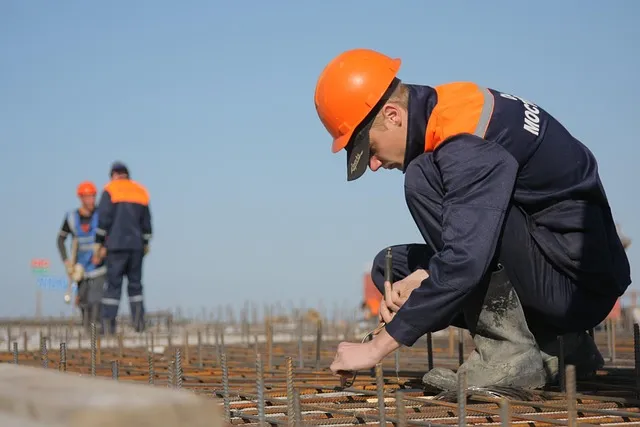Foundation Contractors specialize in identifying and rectifying basement foundation cracks caused by settlement, shifting soil, or structural issues. They employ advanced techniques like epoxy resin and polyurethane foam injection to fill voids, prevent erosion, and reinforce the foundation, ensuring longevity and stability. A thorough inspection by these experts is crucial for selecting the right materials and implementing effective solutions. Regular maintenance, including annual inspections, proper drainage systems, and sump pumps, is vital for long-term prevention of basement cracks.
Basement cracks can be a common concern for homeowners, indicating potential structural issues. This comprehensive guide delves into the world of basement foundation crack injection—a popular solution. We explore the process, from understanding the technique to selecting the right materials and contractor expertise. Learn about the common causes of these cracks and how professional inspection and assessment are crucial. Discover maintenance tips to prevent future problems, ensuring your basement remains a sturdy and safe haven. (Keywords: Foundation Contractors)
Understanding Basement Foundation Crack Injection

Basement Foundation Crack Injection is a specialized process aimed at reinforcing and repairing cracks in basement foundations. These cracks can be caused by various factors, such as settlement, shifting soil, or structural issues. When left unattended, they may compromise the integrity of the foundation, leading to water intrusion, mold growth, and even structural damage.
Foundation contractors employ advanced techniques and materials for crack injection, including epoxy resins and polyurethane foams. They first assess the extent of the damage, clean the crack, and then inject the chosen compound under pressure. This process fills the voids, prevents further erosion, and provides a strong bond that reinforces the foundation. Such expertise is crucial in ensuring the longevity and stability of basements, offering peace of mind for homeowners.
Common Causes of Basement Cracks

Basement cracks can be caused by a variety of factors, many of which are related to the structure’s foundation. One of the most common causes is settlement, which occurs when the soil around the basement shrinks or shifts due to changes in moisture levels or weight distribution. This movement puts stress on the foundation walls, leading to cracks over time. Another frequent culprit is hydrostatic pressure, where water accumulation in the ground pushes against the foundation, causing it to bow or crack.
Foundation contractors often encounter these issues and are equipped to address them through specialized techniques like crack injection. By identifying the root cause, professionals can employ effective solutions to prevent further damage and ensure the structural integrity of the basement.
The Role of Foundation Contractors

When it comes to basement foundation crack injection, professional Foundation Contractors play a pivotal role. Their expertise lies in assessing the extent of damage and determining the most effective solution, whether it’s structural repair or crack stabilization. These contractors are equipped with specialized equipment and knowledge to handle various crack types, ensuring long-lasting results.
They also provide valuable guidance on preventive measures and maintenance tips to help homeowners protect their basements from future cracks. By working with Foundation Contractors, you gain access to their experience and industry insights, ultimately leading to a more durable and secure foundation for your home.
Inspection and Assessment Procedures

When considering basement foundation crack injection, a thorough inspection and assessment are paramount. Foundation contractors will first examine the structure to identify the extent and type of cracks. This involves visual inspection, often with specialized equipment, to gauge the depth, width, and pattern of the cracks. The assessment also considers the age of the foundation, the type of construction, and any signs of water intrusion or ongoing structural movement.
This initial evaluation guides the injection process. Foundation contractors will determine the appropriate sealant or filling material based on the crack’s characteristics. They may use non-toxic, flexible products that expand upon application to fill and prevent further damage. The goal is to enhance the structure’s integrity, ensuring longevity and stability for the basement and above-grade areas.
Choosing the Right Injection Materials

When it comes to basement foundation crack injection, selecting the appropriate materials is a critical step. Foundation contractors should opt for high-quality, durable polymers or epoxy resins designed specifically for structural repairs. These materials provide exceptional bonding strength and flexibility, ensuring long-lasting results. The right injection compound must also be compatible with concrete and capable of filling intricate cracks effectively.
Professionals in the field understand that different crack types require tailored solutions. For wider cracks, a more viscous material might be needed to maintain structural integrity. Narrow, hairline cracks may demand a lighter formula that still offers sufficient strength. Foundation contractors should assess crack characteristics, consider environmental factors, and consult with material manufacturers to make an informed choice, guaranteeing the effectiveness of the injection process.
The Injection Process Step-by-Step

The injection process for basement foundation cracks begins with a thorough inspection by experienced foundation contractors. They assess the extent and type of cracks, identifying potential causes like settling or movement. This step is crucial to determine the best course of action.
Next, the area around the cracks is cleaned and prepared. Foundation contractors then mix a special epoxy injection compound tailored for structural integrity. Using precision equipment, they inject this compound into the cracks from multiple points, ensuring complete penetration. The compound expands and hardens, filling the crack from the inside out, providing long-lasting stability to the foundation.
Long-term Maintenance and Prevention Tips

Regular maintenance is key to ensuring your basement remains crack-free in the long term. One effective preventive measure is to have a professional inspection conducted at least once a year by experienced foundation contractors. They can identify any potential issues early on, allowing for prompt action and repair. This proactive approach can save you from costly repairs down the line and further damage to your home’s structural integrity.
Additionally, proper drainage around your home is essential. Ensure that rainwater is directed away from your basement walls by installing adequate downspouts and gutter systems. Consider investing in a sump pump system if your area experiences frequent flooding, as this can help reduce moisture levels in the basement, preventing crack formation and promoting a healthier living environment.
